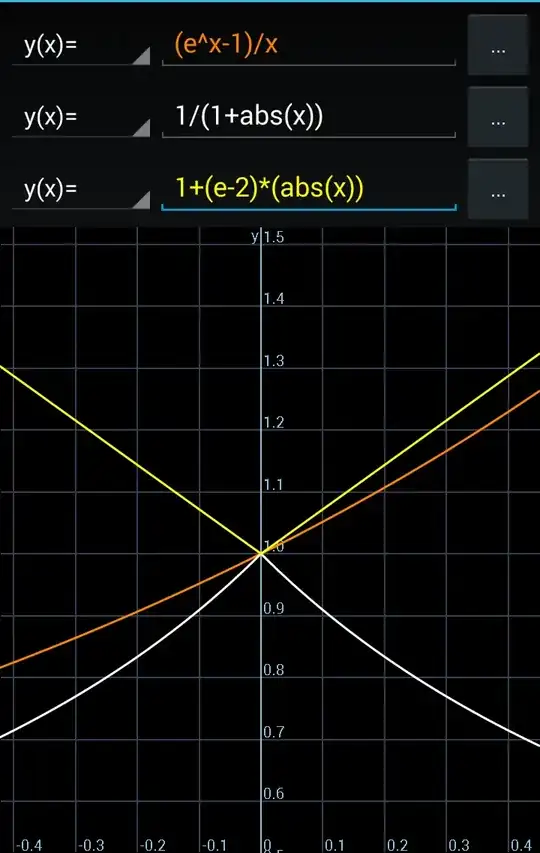I am studying about sandwich theorem and its applications by deriving some well-known limits such as this- $$\lim_{(x \to 0)}\left(\frac{e^x-1}{x}\right)=1$$ while I found some proofs of this result by first defining $e$ and then using that definition such as here(Proof of $ f(x) = (e^x-1)/x = 1 \text{ as } x\to 0$ using epsilon-delta definition of a limit)(which I agree sounds a lot easier because if one is using the Taylor series expansion of $e^x$ then it becomes very easy)but my book tries to do this in a different manner by using this inequality $$\frac{1}{1+|x|}≤\left(\frac{e^x-1}{x}\right)≤ 1 + (e – 2) |x|$$(holds for all $x$ in $[–1, 1]-[0]$)
and then just using sandwich theorem the limit is easily calculated , but the book does not explain as to from where this inequality came from.And I am not able to get it by myself ,as I am not able to see how can this result be so obvious, and even though the graph does make it a bit clear(which I have attached below) still I am not able to get the given inequality(any hints there?)

I tried to search it on this site but couldn't find it,but still I found some very neat applications of sandwich theorem such as here ( How to prove that $\lim\limits_{x\to0}\frac{\sin x}x=1$?) so which makes me think that maybe this inequality can be derived easily by looking at it's geometrical interpretation such as in the link given.
So can someone please help me in understanding the geometrical meaning of this inequality (just like in the limit given in the link above) or help to derive it using its geometrical implications?
1)And even if that is not possible can someone help me in understanding the inequality intuitively because I honestly haven't got any idea as to how such a weird looking inequality can be related to the given limit,
2)And how that inequality is derived ?
3)Also what can possibly be the motivation behind this complicated inequality for deriving this limit, are there other such wierd inequalities also for finding this limit?